Costa Rican raisin honey treated coffee beans Milasu Rosa coffee beans brewing flavor and taste

Professional coffee knowledge exchange more coffee bean information please follow the coffee workshop (Wechat official account cafe_style)
This is a special coffee bean, Qianjie if this is a rose summer mix beans, you may say it is a flower butterfly, but it is not, this is a mix of Milasu rose summer coffee from Costa Rica. The owner of the farm is a doctor of agriculture who is good at coffee treatment and post-position. this mixed bean is treated with grape dried honey, and the flavor level is very rich after blending many kinds of beans, in addition to the elegant jasmine fragrance of Rosa Summer itself. there are other beans with a combination of their own characteristics, with rich berry flavor, fruit juice taste, bright and soft acidity, with the sweetness of raisin honey treatment.
Introduction of Coffee producing areas in Costa Rica
This Costa Rican rose summer coffee bean comes from Milasu Manor in the Tarazu region. This is a very small manor, and the whole estate is taken care of by Esteban and his family. Esteban Sanches, who used to be a member of the family of Candle Farm next door, set up a separate estate, Milasu, because of his insistence on coffee beans. Sanches does all the small wet treatment machines in the treatment plant from design to assembly. In the coffee garden, Sanches said that the quality of coffee starts with the trees themselves. Although machines can separate the good from the bad, if the quality of the coffee is good, there is no need for the machine to distinguish between the good and the bad. He also said that God gives us a beautiful environment, and we take care of the coffee beans with love. This is feedback and sharing. Thank you for your help so that he can realize his dream. He is also willing to share his experience and achievements with other farmers so that everyone's coffee dream can come true.
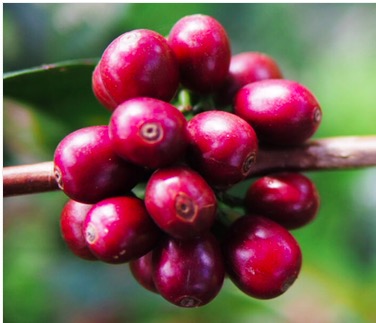
Coffee bean variety
The Costa Rican rose summer blend purchased in Qianjie Coffee this time consists of 50% rose summer coffee beans and a mixture of 50%ET47, SL28 and MAICO. The species of Geisha was discovered in the Rose Summer Forest of Ethiopia in 1931 and sent to the Coffee Institute in Kenya; it was introduced to Uganda and Tanzania in 1936, in Costa Rica in 1953, and in Panama from Franco Coco of Dongba Seven Farm Garden in the 1970s. Mr. Serraxin got the seeds from CATIE in Costa Rica and began to grow Rosa Coffee, which is hard to come by because of its low production and bidding.
ET47 comes from the native species of Ethiopia, native Rosa, half of which is used to study hybrid varieties in Costa Rica, and No. 47 in the laboratory (because many varieties have been introduced during the same period, most of them are identified by numbers). The goal of SL28 breeding SL28 was to produce a large number of coffee beans with high quality and resistance to diseases and insect pests, but in some producing areas, the goal of breeding was mainly high yield and disease resistance, without considering disease resistance. Thanks to the bourbon gene, although the later SL28 yield was not as expected, the copper leaf color and broad bean-shaped beans have great sweetness, balance and complex flavor, as well as significant citrus and black plum characteristics.
Coffee bean treatment
Raisin honey treatment: retain 100% pectin and zero water treatment. It increases the difficulty of the honey processing method, which requires strict control of time. On the day of harvesting coffee cherries, pour the harvested coffee fruit into a big trough, and the ripe and full fruit will sink to the bottom of the water; the underdeveloped or overripe fruit will surface, and these floating beans need to be removed. Dry the screened coffee fruits on an elevated bed for at least three days, then peel the cherries and retain the pectin before drying. At this stage, climate factors are the key to the success of honey treatment. Keep turning these coffee cherries during the drying process to make them dry evenly, but control the turning frequency and dry slowly to ensure that the coffee is fermented, but not so slowly that it is overfermented.
Raw bean analysis
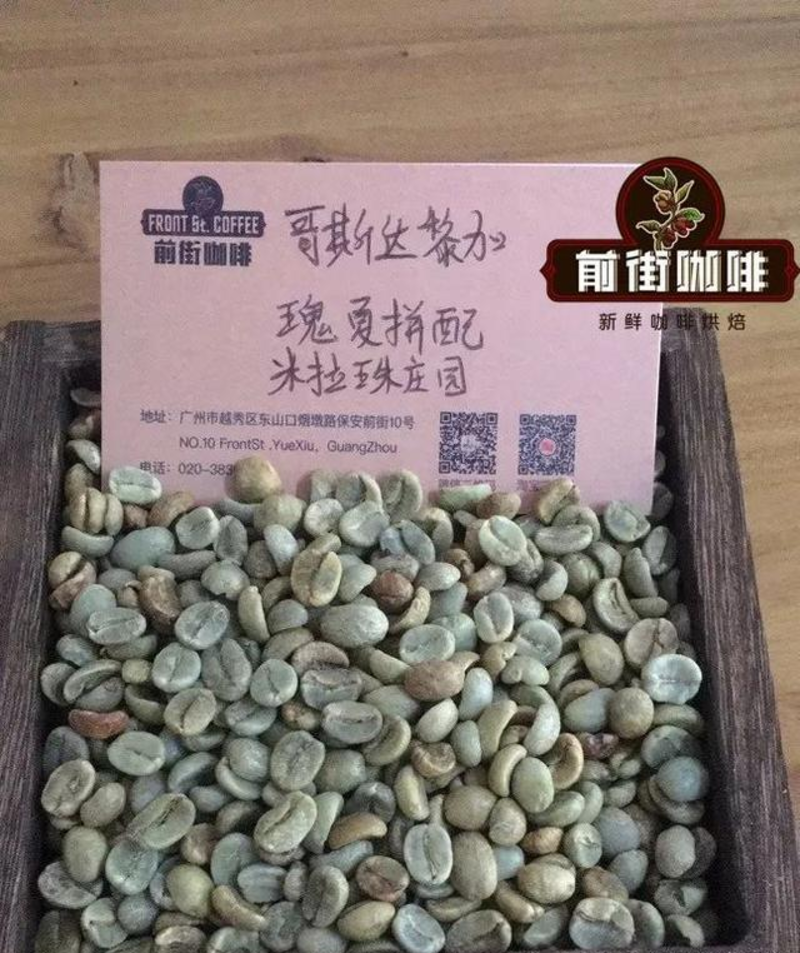
Front Street Coffee Costa Rican Rose Summer Coffee Raw beans
Qianjie Coffee this purchase of Costa Rican Tarasu rosy summer coffee is composed of 50% rose summer coffee beans and a mixture of 50%ET47, SL28 and MAICO. Rose coffee beans provide this coffee with the aroma of jasmine, while other varieties enrich the strawberry flavor of this coffee, which is sweetened by the treatment of raisin honey.
Baking suggestion
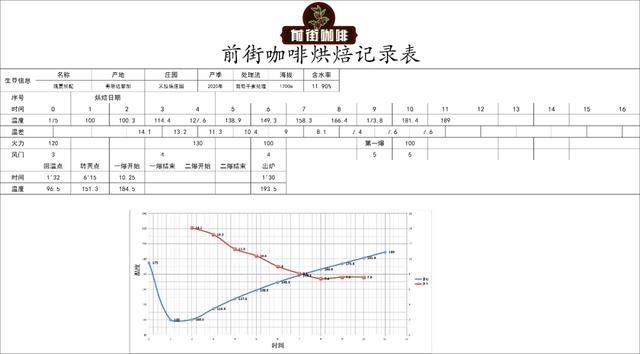
Qianjie Coffee Rose Summer mixed Coffee Bean Baking Curve
Cup test report
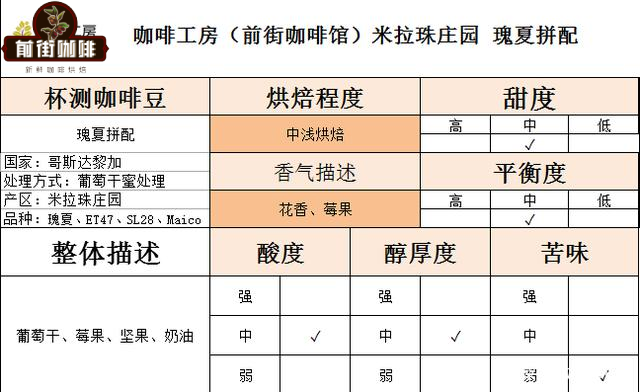
Test report of Qianjie Coffee Rose Summer mixed Coffee Bean Cup
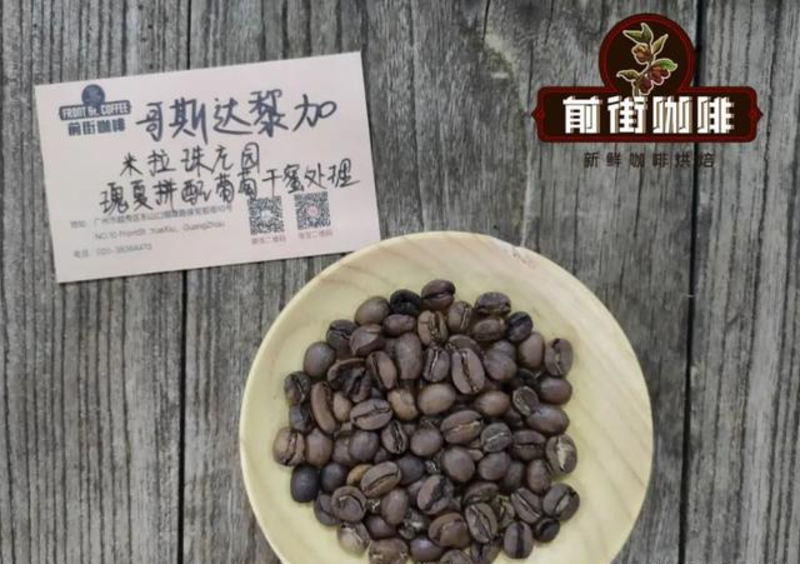
Country: Costa Rica
Manor: Mirazhu Manor
Altitude: 1700m
Treatment: raisin honey treatment
Varieties: Rosa, ET47, SL28, MAICO
Qianjie Coffee Rose Summer mixed with Coffee beans Coffee

Parameters: V60 peg 1mm 15 ℃ / grind degree: granulated sugar size (Chinese standard no. 20 sieve pass rate 58%) / cooking time 2 minutes manipulation: 30 grams of water steaming for 30 seconds, slow central water injection to 125g section, water level drop is about to expose the powder bed, pour water with a slightly larger water flow until the end of 225g.
Flavor: the aroma of jasmine, with strawberry and raisin flavor in the mouth, strawberry candy and nut flavor in finish, creamy taste.
Important Notice :
前街咖啡 FrontStreet Coffee has moved to new addredd:
FrontStreet Coffee Address: 315,Donghua East Road,GuangZhou
Tel:020 38364473
- Prev
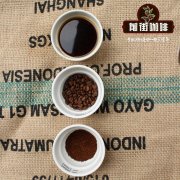
The flavor characteristics of Mavis Bank Manor in the Blue Mountains of Jamaica and its introduction
JAMAICA BLUE MOUNTAIN MAVIS BANK ESTATE Blue Mountain Mavis Bank Manor Origin: Jamaica production area: statutory Blue Mountain planting area Manor: Marvis Bank production Variety: iron Card seed (Typical) Harvest time: January-March planting height: 1200m processing method: Washed/sun dried particle size:
- Next
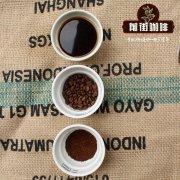
A brief introduction to the description of Flower God Coffee Flavor characteristics in Antigua producing area of Guatemala
Guatemala Guatemala Flower God treatment: washing Origin: Guatemala Guatemala production area: Antigua Antiqua altitude: 1200-1600 m Variety: Kaddura Caturra, Kadui Catuai, Bourbon Borbon Grade: SHB Flavor description: Hua Shen has a very pleasant and elegant flower fragrance main flavor, acid soft and chocolate-like wind
Related
- Detailed explanation of Jadeite planting Land in Panamanian Jadeite Manor introduction to the grading system of Jadeite competitive bidding, Red bid, Green bid and Rose Summer
- Story of Coffee planting in Brenka region of Costa Rica Stonehenge Manor anaerobic heavy honey treatment of flavor mouth
- What's on the barrel of Blue Mountain Coffee beans?
- Can American coffee also pull flowers? How to use hot American style to pull out a good-looking pattern?
- Can you make a cold extract with coffee beans? What is the right proportion for cold-extracted coffee formula?
- Indonesian PWN Gold Mandrine Coffee Origin Features Flavor How to Chong? Mandolin coffee is American.
- A brief introduction to the flavor characteristics of Brazilian yellow bourbon coffee beans
- What is the effect of different water quality on the flavor of cold-extracted coffee? What kind of water is best for brewing coffee?
- Why do you think of Rose Summer whenever you mention Panamanian coffee?
- Introduction to the characteristics of authentic blue mountain coffee bean producing areas? What is the CIB Coffee Authority in Jamaica?

